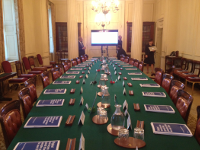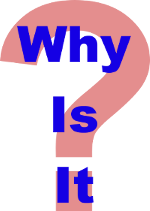|
Why Is It Called the Cabinet? The governments of many Western countries have a Cabinet of some sort, consisting of top Ministers, Secretaries, or advisers who have differing roles of influence in advising the country's leader. 
The origin of the term is thought to have come from either a French word (cabine) or an Italian word (cabinetto), both meaning "small private room." When the monarch of prime minister or whoever was leading the government wanted to have a private meeting of his or her top advisers, they would all move from a large public room to a smaller room, in order to achieve some form of privacy and limit interruptions, so important decisions could be made. The term Cabinet, used to describe this council of governmental advisers, has been in use for a few hundred years. As with many such things, England was the first country known to use the term in that way. It was in the 18th Century, in the reign of King George I, that the English started calling the king's top ministers the Cabinet. Later English monarchs, such as Charles I, referred to a Cabinet Council, as a private version of the more well-known Privy Council. The word "Cabinet" is nowhere found in the Constitution; rather the President can appoint "principal officers" of "executive departments." It was President James Madison who is thought to have first described the meetings of his top advisers as "the president's cabinet." The first United States Cabinet, chosen by George Washington, had four members:
Vice-president John Adams was not included in Washington's Cabinet because he was considered a legislative officer, in his capacity as President of the Senate. It wasn't until the 20th Century that the Vice-president was part of the Cabinet. The President nominates and the Senate confirms members of the Cabinet, who serve at the President's direction and can be dismissed at any time. Tradition holds that members of the Cabinet change with the election of a new President or even with the re-election of a President. The U.S. Constitution prohibits Cabinet members from concurrently serving in Congress. Meetings of the entire Cabinet are rare. The United States Cabinet has nearly two dozen members:
In addition, other officials have a rank equable with members of the Cabinet:
The Cabinet in the United Kingdom has 21 members, of which the Prime Minister is one. Heads of government departments are called Ministers. Their Cabinet titles vary. Some are called Chancellor; the rest are called Secretary. Under the Westminster System, which describes the U.K. government, the majority party (or members of a minority party if the government is a coalition) selects the members of the Cabinet and the largest minority party, known as the Official Opposition, has a Shadow Cabinet, which mirrors the Cabinet. Have a suggestion for this feature? Email Dave. |
Social Studies for Kids |





